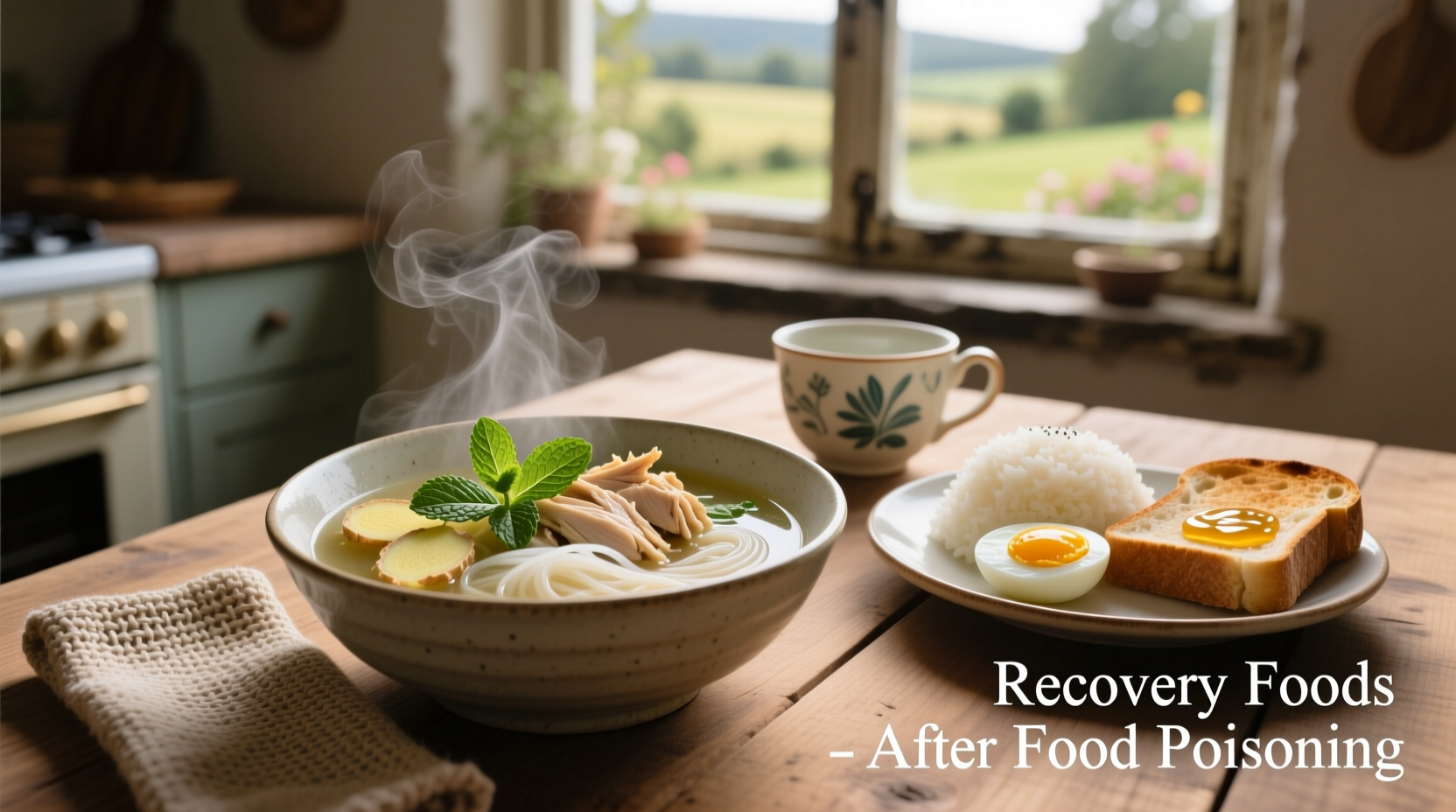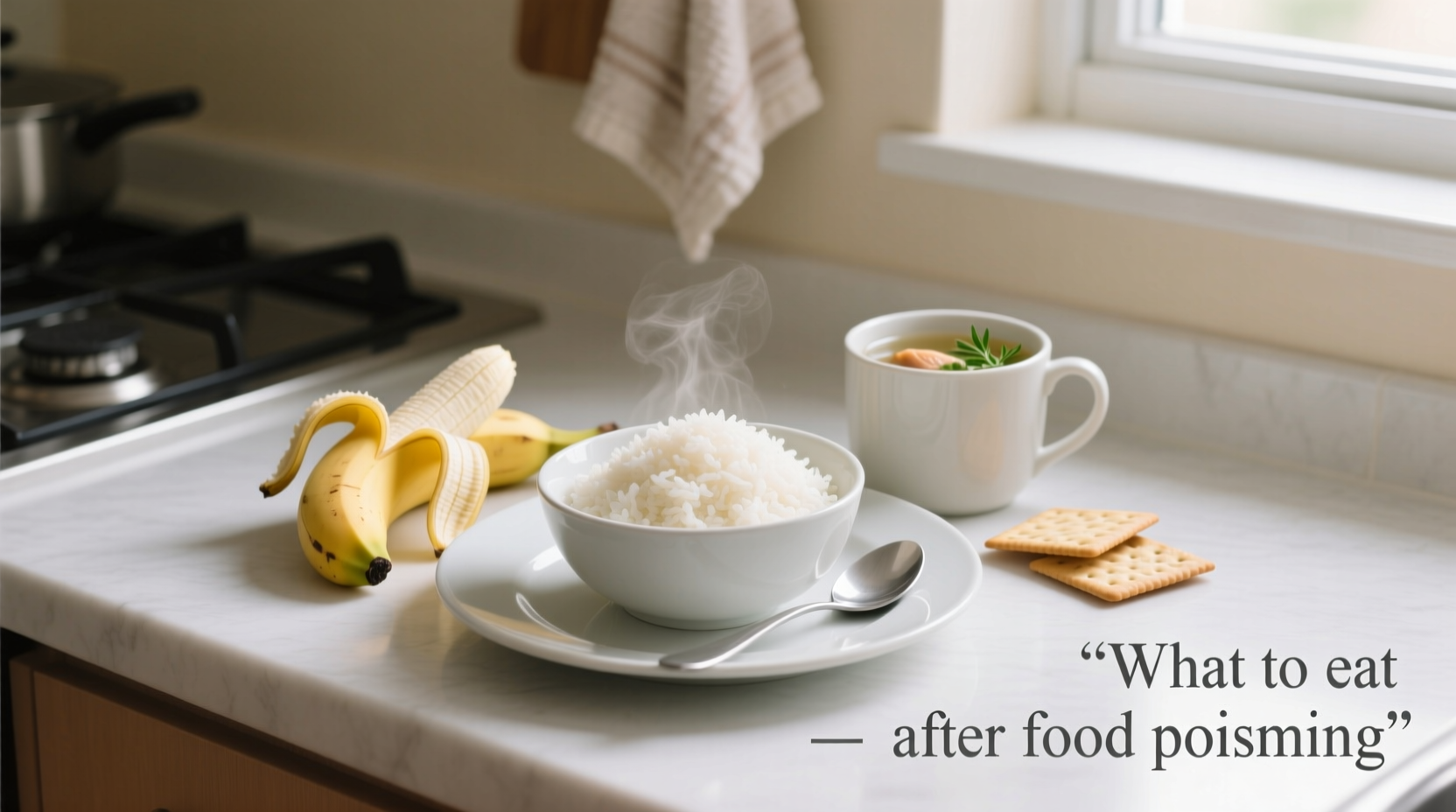Your Step-by-Step Recovery Nutrition Plan
When you're recovering from food poisoning, choosing the right foods can significantly shorten your recovery time. Based on clinical guidelines from the Centers for Disease Control and Prevention, the first 24-48 hours are critical for proper rehydration and gentle reintroduction of foods. This guide provides medically sound recommendations that follow current gastroenterological best practices—not outdated advice you might find elsewhere.

Understanding Your Body's Needs After Food Poisoning
Your digestive system needs special care after food poisoning. The violent vomiting and diarrhea that characterize foodborne illness deplete your body of essential fluids and electrolytes while irritating your gastrointestinal tract. According to the Mayo Clinic, proper nutrition during recovery helps restore your gut lining and rebuild healthy bacteria.
| Recovery Stage | Timeline | Recommended Foods | Foods to Avoid |
|---|---|---|---|
| Stage 1: Acute Phase | First 12-24 hours | Clear fluids, oral rehydration solutions | All solid foods, dairy, caffeine |
| Stage 2: Early Recovery | Days 1-2 | BRAT foods, broth, boiled potatoes | Fatty foods, spicy foods, raw vegetables |
| Stage 3: Intermediate Recovery | Days 3-4 | Cooked vegetables, lean proteins, probiotic foods | High-fiber foods, acidic foods |
| Stage 4: Full Recovery | Days 5-7 | Normal diet with gradual reintroduction | Only foods that previously caused issues |
Hydration: Your Most Critical Recovery Step
Dehydration is the most dangerous complication of food poisoning. The National Institute of Diabetes and Digestive and Kidney Diseases emphasizes that replacing lost fluids takes priority over food intake initially. Start with small sips of:
- Oral rehydration solutions (like WHO formula)
- Clear broths (chicken or vegetable)
- Water with a pinch of salt and sugar
- Weak herbal teas (chamomile or ginger)
Avoid sports drinks initially as their high sugar content may worsen diarrhea. Gradually increase fluid intake as tolerated, aiming for at least 8-10 glasses daily until symptoms resolve completely.
The Modern BRAT Diet Approach
While the traditional BRAT diet (bananas, rice, applesauce, toast) remains helpful, recent research from the American Gastroenterological Association shows that adding nutrient-dense foods sooner can speed recovery. Here's how to update this approach:
- Bananas: Rich in potassium to replace lost electrolytes
- Rice: White rice is easier to digest than brown during recovery
- Applesauce: Contains pectin which helps firm stools
- Toast: Choose plain white toast without butter initially
- Add boiled potatoes: For additional potassium and easy-to-digest carbohydrates
- Add plain yogurt: With live cultures to restore gut bacteria (after initial 24 hours)
Foods That Accelerate Your Recovery
Certain foods provide specific benefits during recovery. The Cleveland Clinic recommends incorporating these as soon as you can tolerate them:
- Ginger: Reduces nausea and inflammation (try ginger tea or small pieces of crystallized ginger)
- Probiotic foods: Plain yogurt, kefir, or fermented foods help restore healthy gut bacteria
- Lean proteins: Boiled chicken or turkey after the first 48 hours provide essential amino acids for healing
- Carrot soup: Contains soluble fiber that helps normalize bowel function
Common Recovery Mistakes to Avoid
Many people unintentionally prolong their recovery by making these common errors:
- Returning to normal diet too quickly: Your gut needs time to heal—rushing can trigger symptom recurrence
- Drinking only water: You lose electrolytes that water alone doesn't replace
- Consuming dairy too soon: Temporary lactose intolerance often follows food poisoning
- Eating spicy or fatty foods: These irritate the already sensitive digestive tract
According to gastroenterologists, most adults recover completely within 1-5 days with proper dietary management. Children and elderly patients may require more careful monitoring.
When to Seek Medical Attention
While most food poisoning cases resolve with home care, contact a healthcare provider if you experience:
- Signs of severe dehydration (dizziness, dark urine, dry mouth)
- Blood in vomit or stool
- Symptoms lasting longer than 3 days
- High fever (over 101.5°F or 38.6°C)
- Inability to keep fluids down for 24 hours
Infants, elderly individuals, and those with compromised immune systems should seek medical advice sooner rather than later.
Sample Recovery Meal Plan
Here's a practical day-by-day plan to guide your recovery:
| Day | Breakfast | Lunch | Dinner | Snacks |
|---|---|---|---|---|
| Day 1 | Clear broth, ginger tea | Broth, electrolyte solution | Broth, herbal tea | Ice chips, small sips of water |
| Day 2 | Plain toast, applesauce | White rice, clear broth | Boiled potatoes, broth | Banana, herbal tea |
| Day 3 | Oatmeal (no sugar), banana | Rice, boiled carrots | Boiled chicken, rice | Plain yogurt, crackers |
| Day 4 | Scrambled eggs, toast | Rice, steamed vegetables | Lean protein, cooked vegetables | Fruit, crackers |
Long-Term Gut Health After Food Poisoning
Most people don't realize that food poisoning can temporarily alter gut bacteria composition. Research published in Gastroenterology shows that incorporating probiotic-rich foods for 1-2 weeks after recovery helps restore your microbiome balance. Consider adding:
- Plain yogurt with live cultures
- Kefir
- Sauerkraut (pasteurized)
- Miso soup
Gradually reintroduce fiber over 7-10 days to avoid overwhelming your recovering digestive system. Start with soluble fiber sources like oats and bananas before adding insoluble fiber from whole grains and raw vegetables.











 浙公网安备
33010002000092号
浙公网安备
33010002000092号 浙B2-20120091-4
浙B2-20120091-4